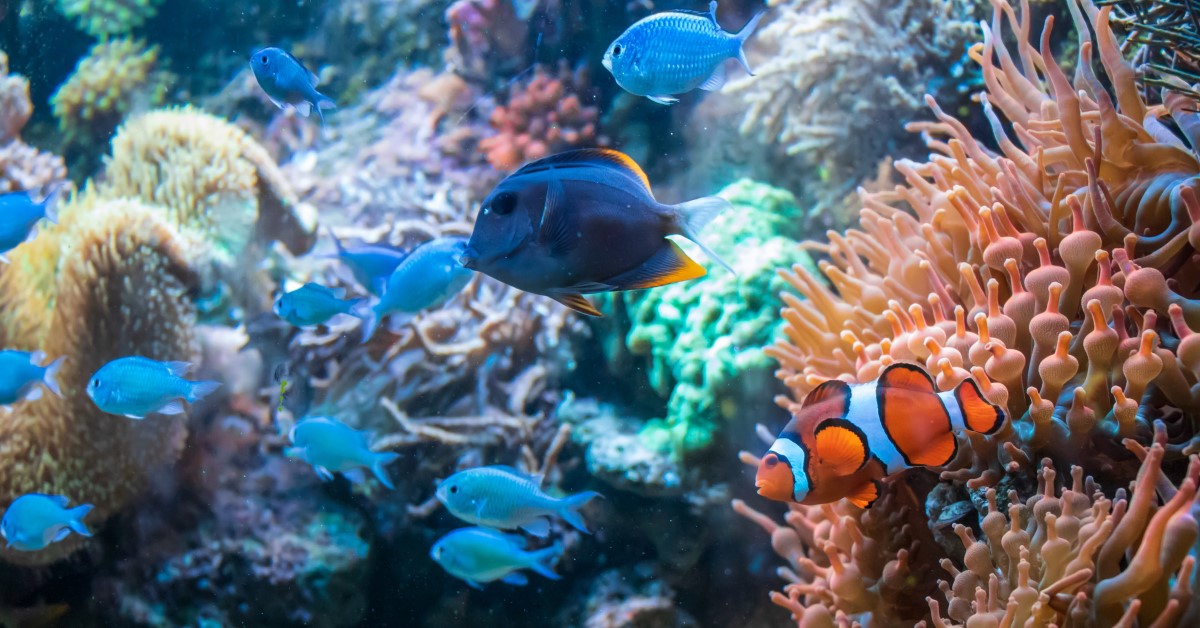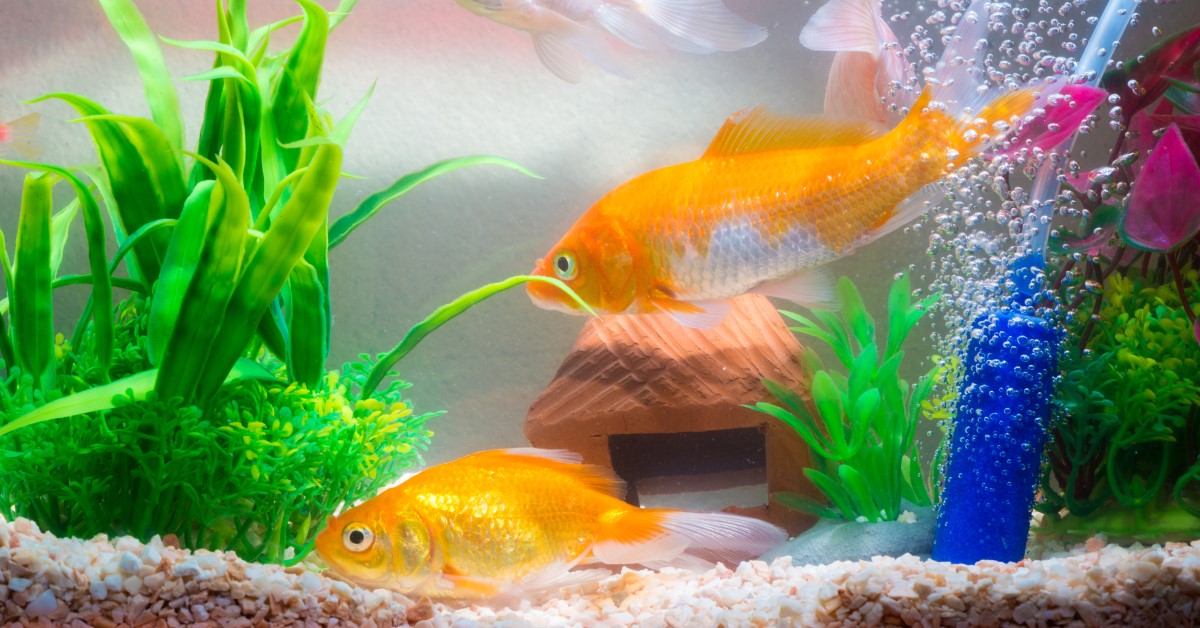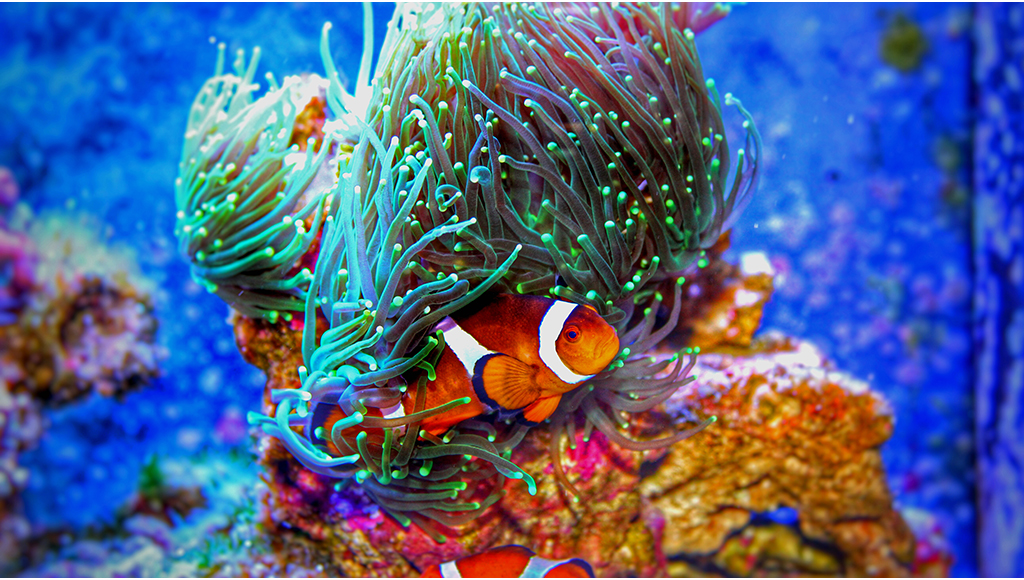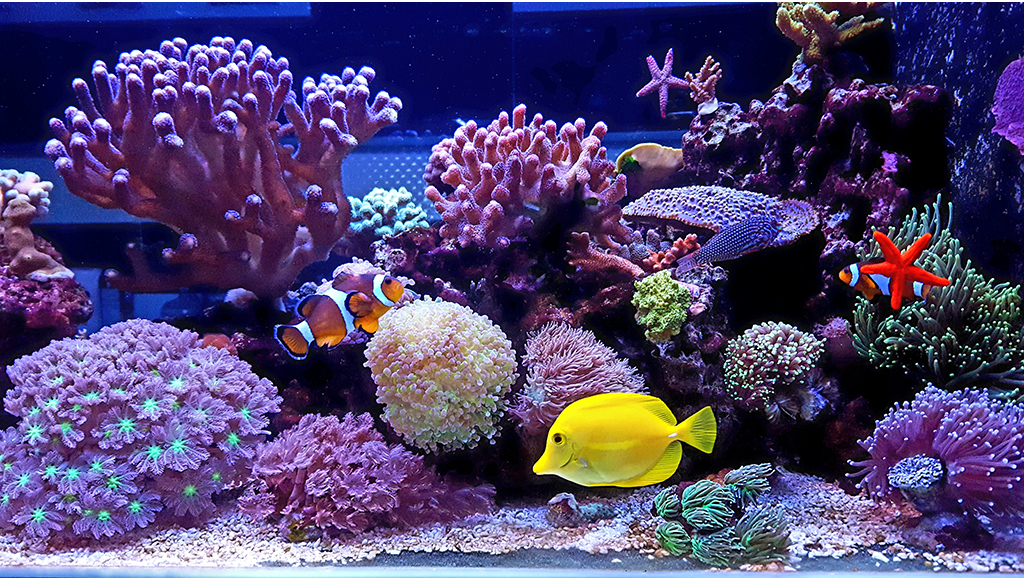How Difficult Is Maintaining a Reef Aquarium....Really?
With some easy ongoing maintenance and patience, maintaining a reef aquarium can be quite easy with the right choice of reef inhabitants and equipment to maintain your aquarium.

There is something incredibly soothing about watching fish swim and corals sway in a gentle current. Many aquarists have the overwhelming sense of pride and satisfaction of owning their small section of a coral reef in the comfort of their own home. But, how difficult is it to create, and maintain, a small piece of the sea. While reef aquariums may seem intimidating at first, they can really be as easy or challenging as you choose to make them. Below, let's take an in-depth look at setting up and maintaining a reef aquarium.
Have a Plan
The biggest piece of the puzzle to maintaining a thriving reef aquarium is to have a plan in place. Understand what it takes to care for your reef inhabitants, and know your limitations. Different reef fish, corals, and invertebrates have different care requirements. The time dedication, equipment, and aquarium size will largely depend on what you plan to keep. Do research ahead of time to learn about the care requirements for individual fish and corals you like, then decide what you need to keep a healthy aquarium. Much as a person with an apartment cannot keep a large and active dog, a person with space for a small tank cannot keep a large, fast-swimming fish.
Get the Equipment
Once you have a solid plan in place for the type of animals you plan to keep in your reef aquarium, you need to be able to keep your inhabitants healthy. You'll need the equipment to house your reef inhabitants, which, admittedly, is a large upfront expense. Be sure to buy the needed equipment upfront. Adding piecemeal equipment style to your reef aquarium will only add to your frustration as a reef keeper and could potentially jeopardize the health and wellbeing of your inhabitants. At a minimum, you'll need to think about:
Aquarium - You'll need space to house your new reef inhabitants. Think about the overall size of your fish tank. Be thoughtful of the final weight of your tank. Water, sand, and rock can get very heavy very quickly. Plan on about ten pounds for every gallon of the aquarium. A 50-gallon aquarium may seem small but can weigh around 500 pounds once everything is added. While it may be tempting to start small, with a so-called nano tank, understand that a small amount of water leaves little wiggle room for when things go south.
Filtration - There are several filtration methods, with no one way being entirely right or wrong. The best filtration option for you will largely depend on the inhabitants you plan on keeping. Natural filtration methods rely solely on live rock, live sand, a refugium, and regular water changes. There is also mechanical filtration that utilizes a protein skimmer, sump filtration, or physical filtration media. Understand that keeping more fish and corals in your aquarium will require more effective filtration methods.
Lighting - To see your fish and to keep corals alive, you'll need to add sufficient lighting. Most saltwater fish are safe with traditional aquarium lighting, but many coral species rely on high-powered lighting. Think about which species of coral you plan on keeping before committing to alight. Your lights will be your most significant investment if you plan to keep coral in your reef aquarium.
Stock Your Aquarium
The last step to setting up your reef aquarium is to stock it. In general, there are three main types of reef aquariums people in the hobby keep. These types of aquariums include:
FOWLR - The FOWLR aquarium is popular because it is a lower-maintenance tank. This type of tank is a Fish Only With Live Rock aquarium. You'll be able to minimize filtration and lighting requirements and still manage to keep an aquarium of beautiful saltwater fish. Many people who want aggressive fish or fish that eat coral will opt for this type of aquarium.
Mixed Reef - The mixed reef aquarium is probably the most popular option with hobbyists. This option allows for fish and a variety of coral types. The type of coral you select will largely dictate the amount of care and maintenance required for your aquarium. Soft corals generally require less care and lighting than LPS or SPS corals.
SPS Dominant - Some of the hardest corals to keep, but arguably the most beautiful, are called SPS corals. These corals require extremely high lighting and stable water parameters.
Ongoing Care
The best recipe for success when it comes to keeping a reef aquarium is to have a plan in place for ongoing care and maintenance. Luckily, a great deal of equipment and technology is in place for this hobby that can make care easy. Automated devices and monitoring systems are available to make your reef aquarium as easy as possible. These high-tech devices can be added over time or all at once when you first establish your reef aquarium.
The key to ongoing success in this hobby is to have patience. Understand that nothing is going to happen quickly when it comes to your aquarium. Although this philosophy can be applied to slow-growing corals and fish, it can also be applied to issues you may experience. While it may seem a problem has occurred overnight, the truth of the matter is that problems take a long time to develop, which means that you have a long time to take corrective action.
Ready to start saving money on pet wellness care?
Then take a look at Mint Wellness, the pet wellness plan that provides fast reimbursement on routine pet care. Save on vaccinations, wellness exams, preventatives, dental, and more!
Learn More


